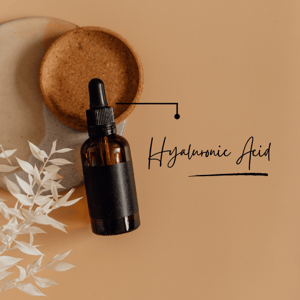Hyaluronic acid (HA) is a naturally occurring substance in our bodies that is responsible for keeping our skin plump, hydrated, and healthy. It is found in connective tissues, synovial fluid, and the eyes, but its most well-known function is in skincare.
HA has been gaining popularity in recent years as a skincare ingredient, and for good reason. But it's capabilities isn't limited to just the cosmetics industry. HA has the ability to hold up to 1,000 times its weight in water, making it a powerful hydrator. In this blog post, we will discuss why HA is important.
HA acts as a:
1) Humectant
2)Rheology modifier
3)Lubricant
1) One of the key reasons why HA is so effective is because it is a humectant.
Humectants are substances that attract and retain moisture from the air, helping to keep the skin hydrated. They work by forming a protective layer on the skin's surface, preventing moisture from evaporating and leaving the skin feeling dry and tight. Hyaluronic acid is an excellent humectant because it has a unique ability to hold up to 1000 times its weight in water.
Rheology is the study of the flow and deformation of materials. In skincare, rheology modifiers are used to adjust the texture, viscosity, and stability of formulations. Hyaluronic acid is a unique rheology modifier because it can change the viscosity of a formulation without affecting its clarity or stability.
When hyaluronic acid is added to a skincare formulation, it can help to improve its texture and viscosity, making it easier to apply and absorb. It can also enhance the stability of a formulation, preventing it from separating or clumping over time.
2) One of the reasons why HA is such an effective rheology modifier is because of its ability to form a gel-like matrix when combined with water. This gel-like matrix can help to thicken and stabilize a formulation, making it easier to apply and providing a more even coverage on the skin.
3) Hyaluronic acid (HA) is a naturally occurring molecule found in our bodies, particularly in our joints, eyes, and skin. In addition to its well-known benefits as a humectant and rheology modifier in skincare, hyaluronic acid is also an effective lubricant.
In our joints, hyaluronic acid acts as a lubricant and shock absorber, helping to reduce friction and prevent damage to the bones and cartilage. As we age or experience joint injuries, the amount of HA in our bodies may decrease, leading to pain, stiffness, and inflammation.
Some real life applications utilizing hyaluronic acid include:
- Synovial fluid
- Eye drops
- Soft tissue or dermal fillers
- Cosmetics and skin care
- Wound healing products
- Intravitreal injection (vitreous humor)
- Ocular drug delivery vehicle (w/ thermos-responsive polymers or as nanoparticles)
- Submucosal injections
In the next couple weeks, we will dive into each application.
Download our application note where we measure hyaluronic acid!
Stay tuned and subscribe to our blog if you are interested!


